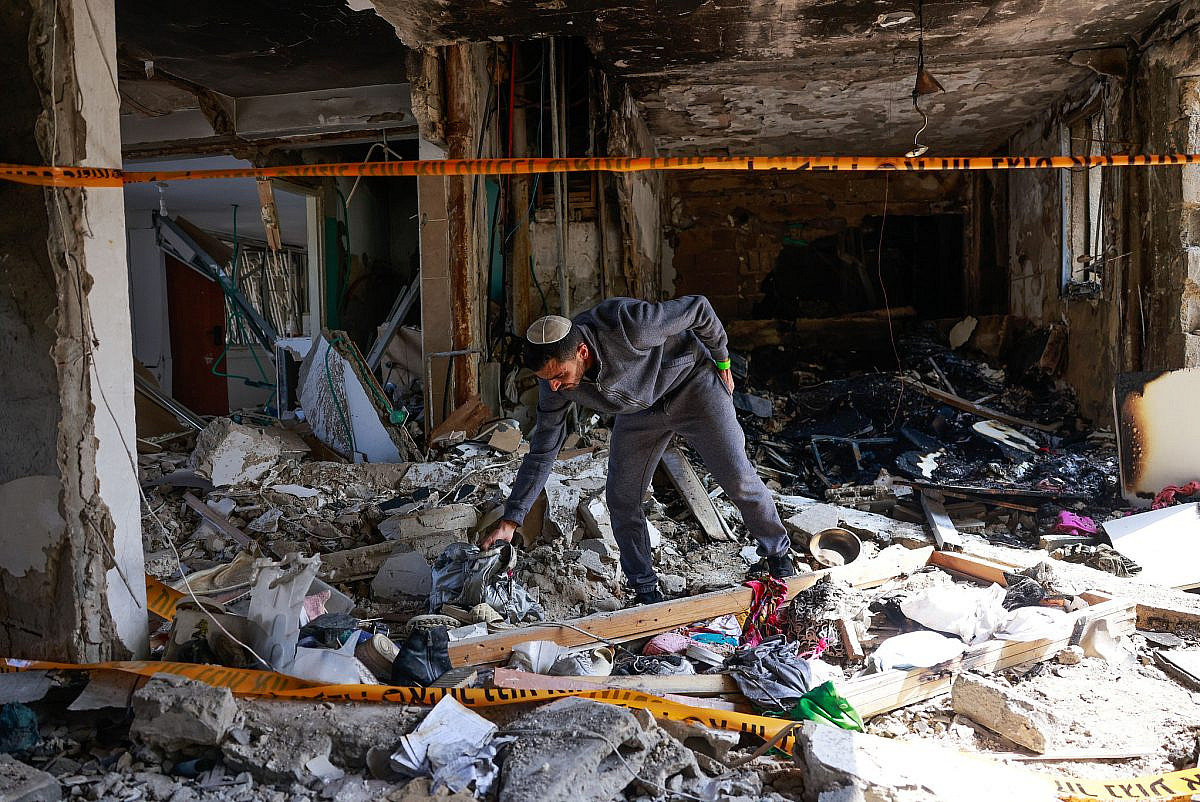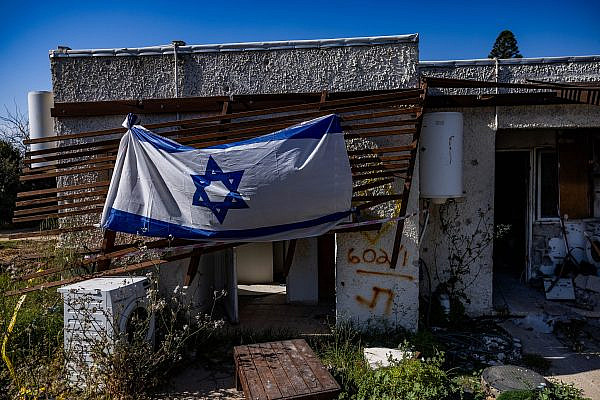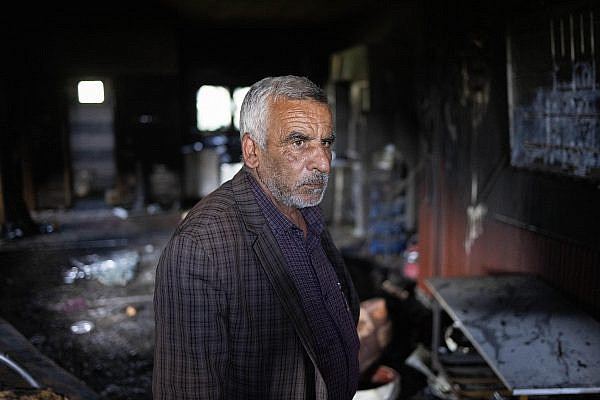Three months after the massacres that devastated their communities, Israel’s authorities have started encouraging residents of several Jewish villages near the Gaza Strip to return home. Dozens of communities within a distance of 7 kilometers (just over 4 miles) from the fence encaging Gaza were evacuated in the immediate aftermath of the October 7 attacks — during which Hamas-led militants killed some 1,200 people and kidnapped around 240 — as Israel began its bombardment of the Strip.
An initial NIS 1 billion ($245 million) was budgeted to care for the displaced Israelis, over 125,000 of whom were put up in hotels and guest houses in tourist centers such as Eilat, the Dead Sea, and elsewhere in the country. But not all communities received the same level of support. While the state’s main calculation in managing the evacuation of the area known as the “Gaza envelope” appears to have been the size of the community and the cost of the evacuation, these disparities have played into and exacerbated race and class divisions that have long existed within Jewish-Israeli society.
The lives of four teachers who work at the Ironi Dalet High School in the southern Israeli coastal city of Ashkelon offer important insight in this regard. All four live in communities that were attacked on October 7 and have borne the brunt of the rockets and mortars fired from Gaza over the past three months: Kibbutz Yad Mordechai, Sderot, and Ashkelon.
Their experiences expose the state’s failures in taking care of its citizens who live in the line of fire, while also revealing the structural inequalities that exist between the traditionally Ashkenazi and affluent kibbutzim on the one hand, and the traditionally Mizrahi and poor development towns and mixed Ashkenazi-Mizrahi cities on the other.
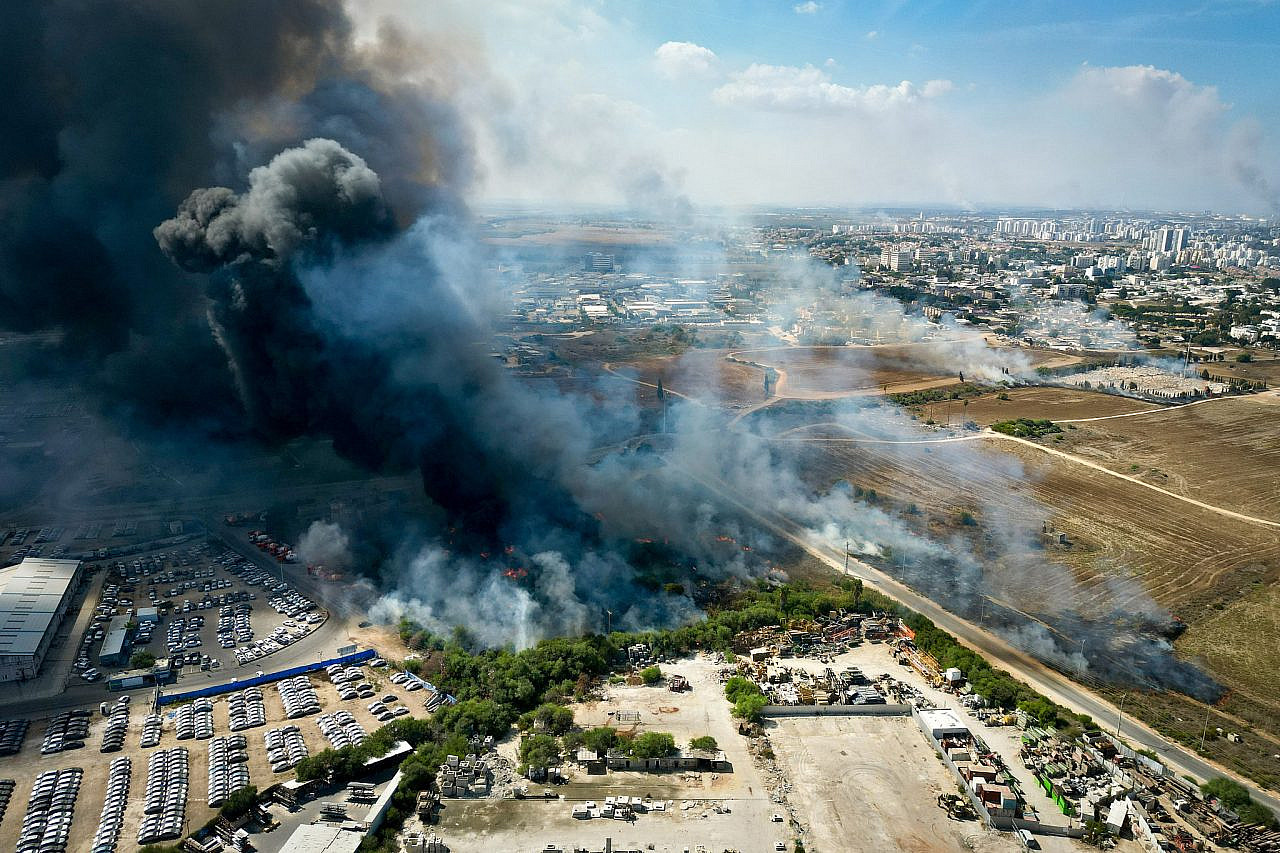
Yad Mordechai: ‘When I hear other people’s stories, I feel guilty’
Galit Nir lives in Kibbutz Yad Mordechai. While most kibbutz members are descendents of the eastern European Jews who founded the communities, Nir is Mizrahi — a descendent of Jews who immigrated to Israel from predominantly Arab and Muslim countries. She moved to the kibbutz in 2011 with her then-husband and three children, buying a small house with a garden.
Yad Mordechai is a 10-minute drive from both the Gaza fence and the Ashkelon high school where Nir teaches. On October 7, Yad Mordechai’s armed security team, with the help of Israeli soldiers, fended off Hamas militants who attempted to enter the kibbutz; as a result, there were no casualties in Yad Mordechai. Nir spent the day alone in her home’s “safe room” — built to withstand rocket blasts — which are common to most new builds in the Gaza envelope.
That same day, the kibbutz’s emergency team put together a list of people who wanted to leave to a hotel further away from hostilities. Even outside of wartime, emergency team members are constantly working on plans to secure hotels that would house kibbutz members should the need arise; later, they know they will get reimbursed by the state for the hotel charges. On October 7, the kibbutz’s emergency team activated its plans: senior kibbutz members were sent to a hotel in Caesarea, while kibbutz members with children, including Nir and her son, were sent to a hotel near Hadera.
The vast majority of the kibbutz’s 800 residents had moved to these two hotels within 72 hours of the war starting. Importantly, they were able to stay together and maintain their sense of community despite the catastrophe.
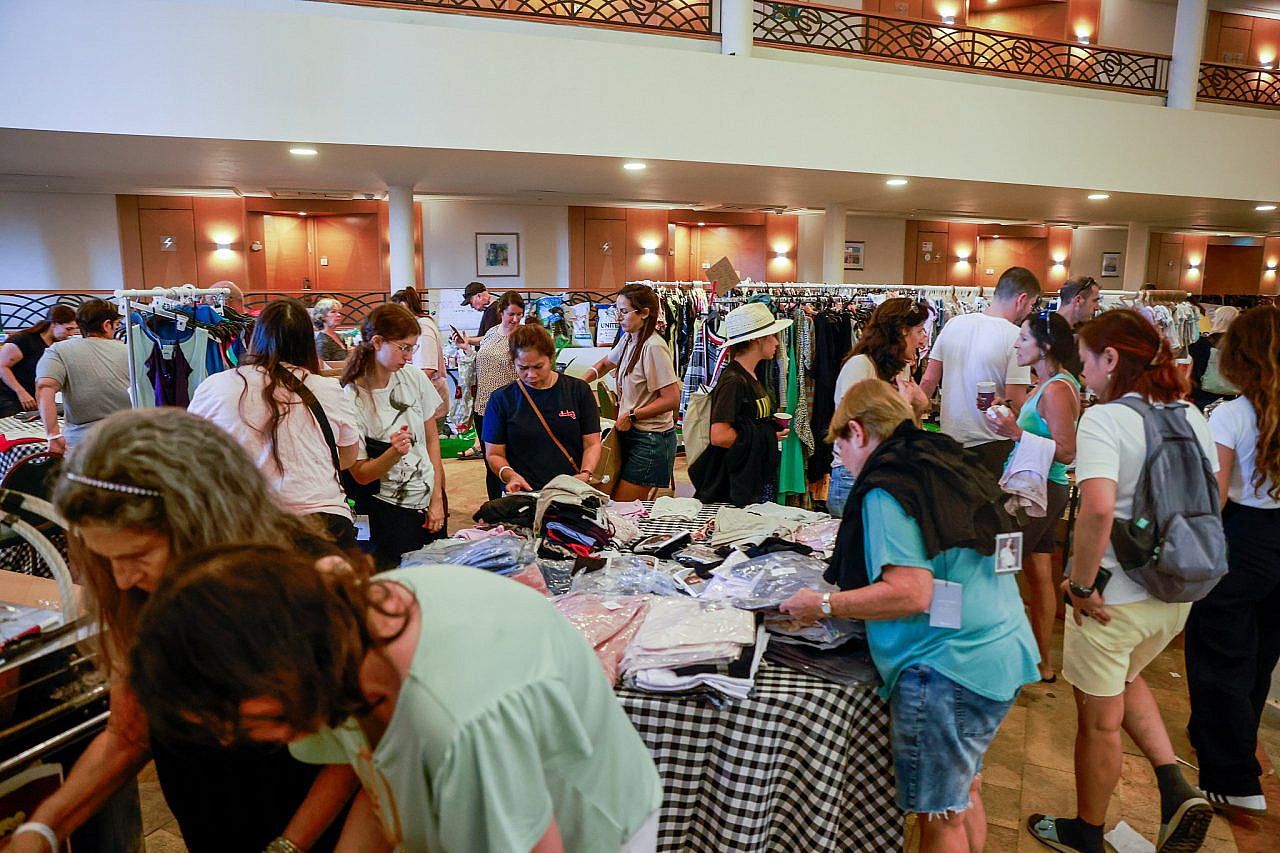
Yad Mordechai is one of 270 kibbutzim in Israel, which are villages with under 1,000 inhabitants that are historically centered around collective farms and communal dining rooms. There are 25 kibbutzim in the Gaza envelope and the northern Negev/Naqab desert — a result of some of the earliest Zionist settlement plans that aimed to populate the borderlands with Jewish communities in order to secure the territory, and, after 1948, to prevent the return of Palestinian refugees from the Nakba.
The highly influential National Plan of 1950, for example, aimed to disperse the population from central Israel into the southern Negev/Naqab. Four years earlier, the Jewish Agency had produced a plan to establish 11 settlements in the area, with the hope of influencing the British Mandate and the international community to include the region within Israel’s borders. Two of those “11 Points” settlements, Nirim and Be’eri, were among the most affected on October 7.
Nir described her experience of being displaced as “sometimes shocking and exhausting,” but considers herself lucky to have been with her kibbutz community. “We’ve done this before,” she said, alluding to previous wars when Gaza envelope communities had to evacuate to hotels.
Although the current war is the longest period that the kibbutzim have had to evacuate for, Yad Mordechai’s community has adapted well. “People are quick to organize,” Nir said. “The kibbutz’s school re-opened near our hotel in Hadera, parents started their own educational program for toddlers, we even have our own doctor and nurse from back home visiting us.”
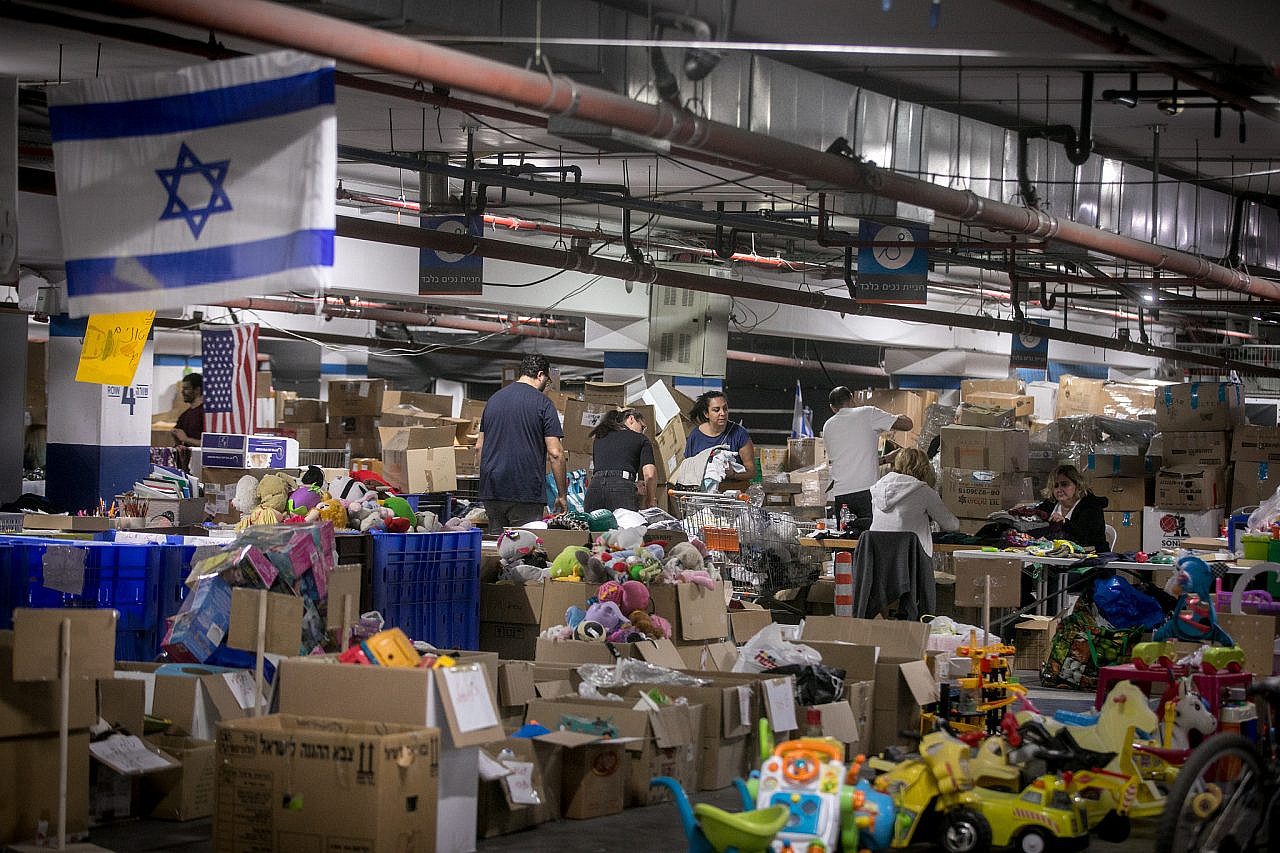
In comparing the experience of kibbutz residents to that of residents of other southern cities in Israel, it is important to note that kibbutzim in the Gaza envelope, such as Yad Mordechai, organize their own evacuation according to the needs of members, and get reimbursed later by the state. Meirav Aharon Gutman, a faculty member in the City Planning Department at Israel’s Technion university, found the reason for the disparity between different border towns’ evacuation policy to be surprising.
“I was struck by how the main factor in determining the decision was the size of the town,” she explained. “The government tries to pay as little as possible.” In other words, the government is much more likely to approve the evacuation of a small community, such as a kibbutz, than a larger community.
Nir is acutely aware of the fact that her friends and colleagues who live in larger cities in the Gaza envelope have had very different experiences since the start of the war. “When I hear their stories, I feel guilty,” she said.
Sderot: ‘I felt sad and frustrated’
Orit Shirker is one such example. She and her family were evacuated several days after Nir, despite the fact that Sderot, where Shirker’s family has lived since 2022, suffered a brutal attack on October 7. At least 70 people, including a minibus full of pensioners, were killed, and it took Israeli forces three days to fully regain control of the city, during which its police station was completely destroyed.
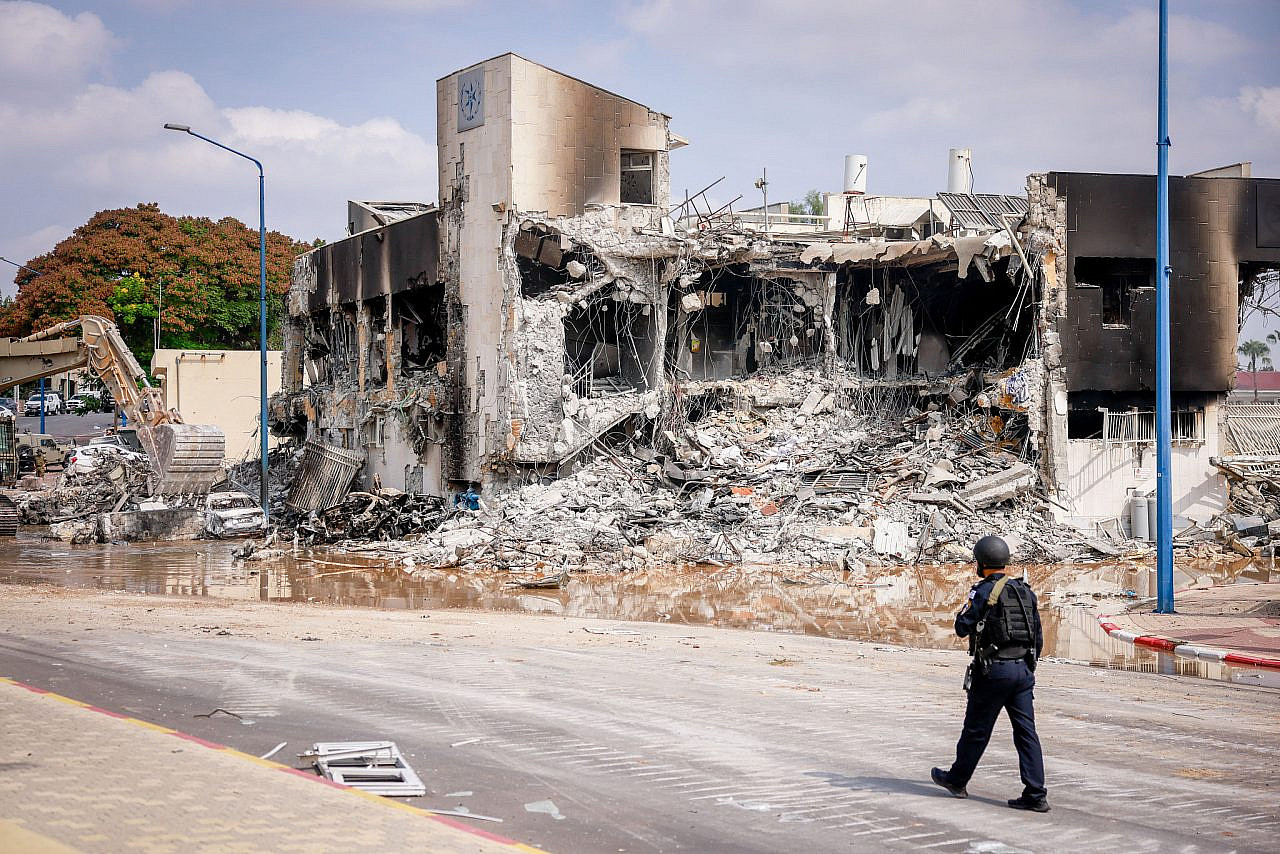
Sderot is a development town — one of around 30 built in the north and south of the country during the 1950s to absorb the masses of new immigrants to Israel, often on the lands of depopulated Palestinian villages (Sderot, for example, was built on the lands of Najd). The earliest residents of these communities, most of whom had recently arrived from Arab and Muslim countries or the Balkans, were settled there by the government and given no choice in the matter.
By the 1960s and 70s, most inhabitants of Negev/Naqab development towns like Sderot were Mizrahim, strengthening the association between Mizrahi communities, peripheral location, and economic deprivation. If kibbutzim are small, organized, communities with a tradition of autonomous resilience and political influence, development towns like Sderot are highly dependent on bureaucratic municipal and governmental services.
Unlike the kibbutzim, where every community had an evacuation plan, Sderot — a city of 30,000 people — was left to fend for itself for days. The city’s mayor had to publicly request the state’s support in helping residents evacuate. Shirker, who normally teaches 10th grade, moved with her husband and two daughters to a hotel in Kibbutz Sde Boker. “We are the only family here from Sderot,” she said.
Before being evacuated, Shirker was struck by how quickly kibbutz members like her friend Nir had found somewhere to go. The hotel to which Nir was evacuated, however, refused to accept anyone who was not a member of Kibbutz Yad Mordechai — only those guests were having their stays reimbursed by the state. “I felt sad and frustrated,” Shirker said when describing the first week of the war.
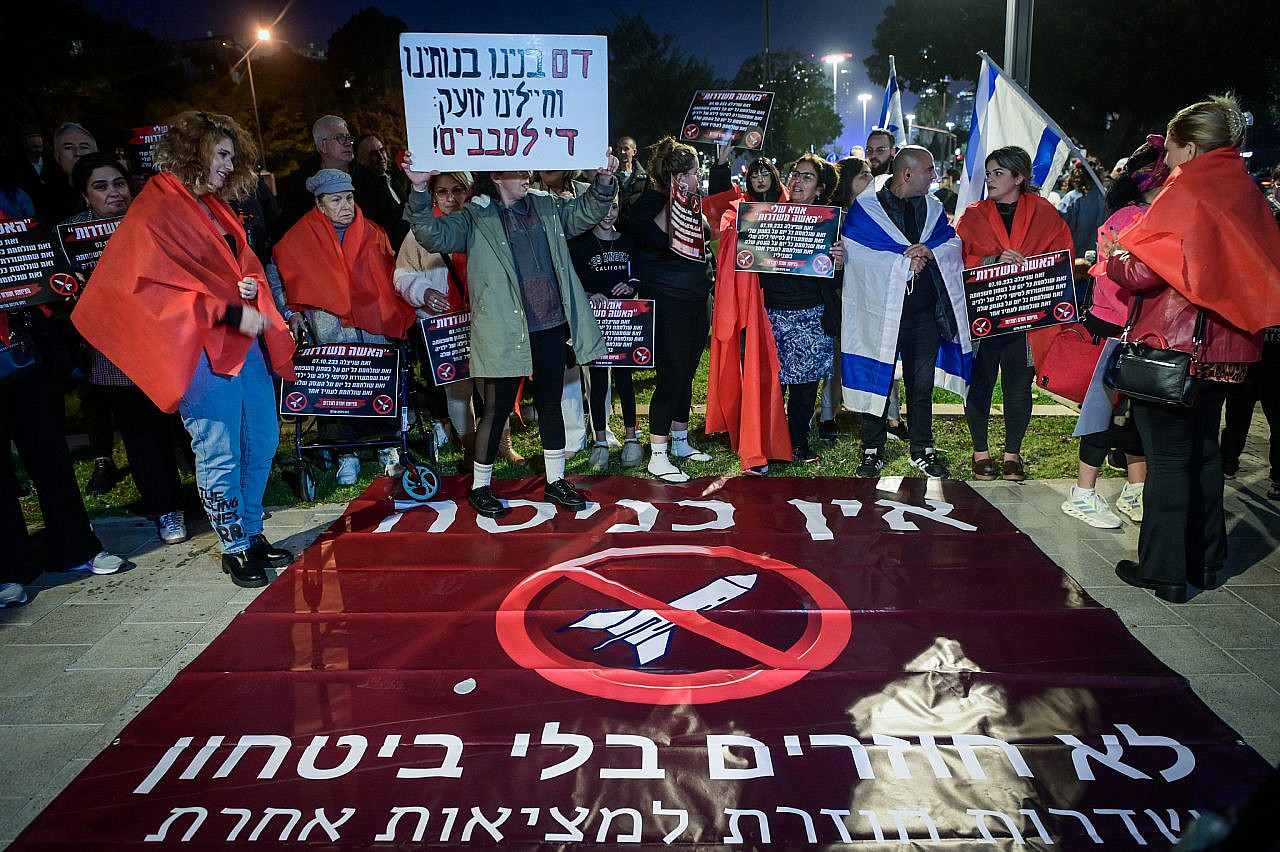
During that week, Sderot kept getting hit with missiles and Israeli security forces had no grasp on Hamas’ presence in the town. “We were not allowed to leave our homes for two days,” Shirker said. “I could only get out of my house on Oct. 9. I knew I wasn’t going to stay in this town for very long.”
Eventually, the state evacuated many of Sderot’s residents. But while Kibbutz Yad Mordechai was able to maintain a sense of community even while displaced, Shirker and her family did not know anyone in the Sde Boker hotel. Shirker’s husband was going to work every day as a police officer in Sderot, and Shirker described feeling lonely and disoriented. “I can hardly make any decision right now,” she said. “I’m happy that the hotel determines when I get to eat, and when I can access the laundry machine.”
Shirker and Nir are two of only four teachers at Ashkelon’s Ironi Dalet High School who live outside of the city. Ashkelon, a city of 130,000 people — built on the lands of the depopulated Palestinian town of Majdal, from which Hamas leader Yahya Sinwar’s family were expelled during the Nakba — has been a regular target of rocket fire from Gaza for more than 15 years. This is a reality to which Nir and Shirker’s colleagues Mali Kovary and Simona Lahav have grown accustomed.
Ashkelon: ‘It’s hard knowing everyone else in the hotel was taken care of’
Kovary, who has lived in Ashkelon for 27 years, grew frustrated waiting for a government plan in the aftermath of October 7 and decided to take matters into her own hands. “When I heard reports of terrorists in Ashkelon on the fourth day of the war — that was the last straw,” she said.
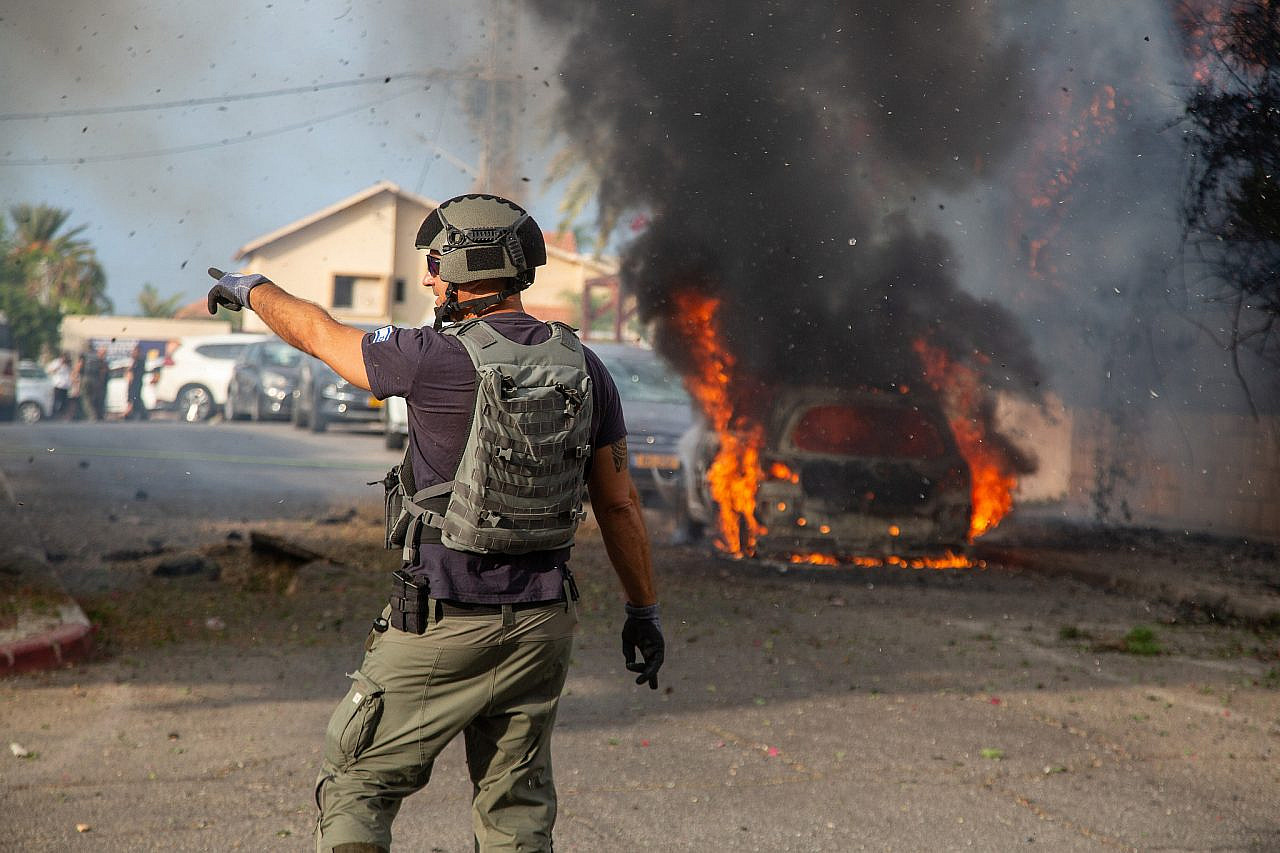
On the morning of October 7, Kovary’s husband was called up for reserve duty, leaving her with her two teenage step-sons and two young daughters. After her step-sons left Ashkelon with their mother, it was just Kovary and her daughters. “My body was paralyzed with fear,” she recounted.
Ashkelon had dozens of missile sirens on October 7. Kovary knocked on the door of a neighbor whom she hardly knew: “My daughters and I spent two nights at her place. It got awkward.”
On Oct. 10, a Hamas militia infiltrated Ashkelon’s industrial area, where they engaged in an exchange of fire with Israeli soldiers. That day, Kovary fled the city with her daughters. They moved between family friends and the occasional discounted hotel room in central Israel.
In late October, they attended activities at a Tel Aviv hotel that the state had rented out for displaced people who qualified for evacuation. Kovary noticed that the hotel’s activities were beneficial to her daughters, who suffered from anxiety. As Ashkelon residents, however, they were not eligible for a subsidized stay in the hotel.
The reception staff initially refused to let them stay there, only relenting when Kovary threatened to sleep in the lobby. Eventually, she negotiated a reduced rate for the family. “It’s hard knowing that everyone else in the hotel was taken care of, and I had to fend for myself,” she said.
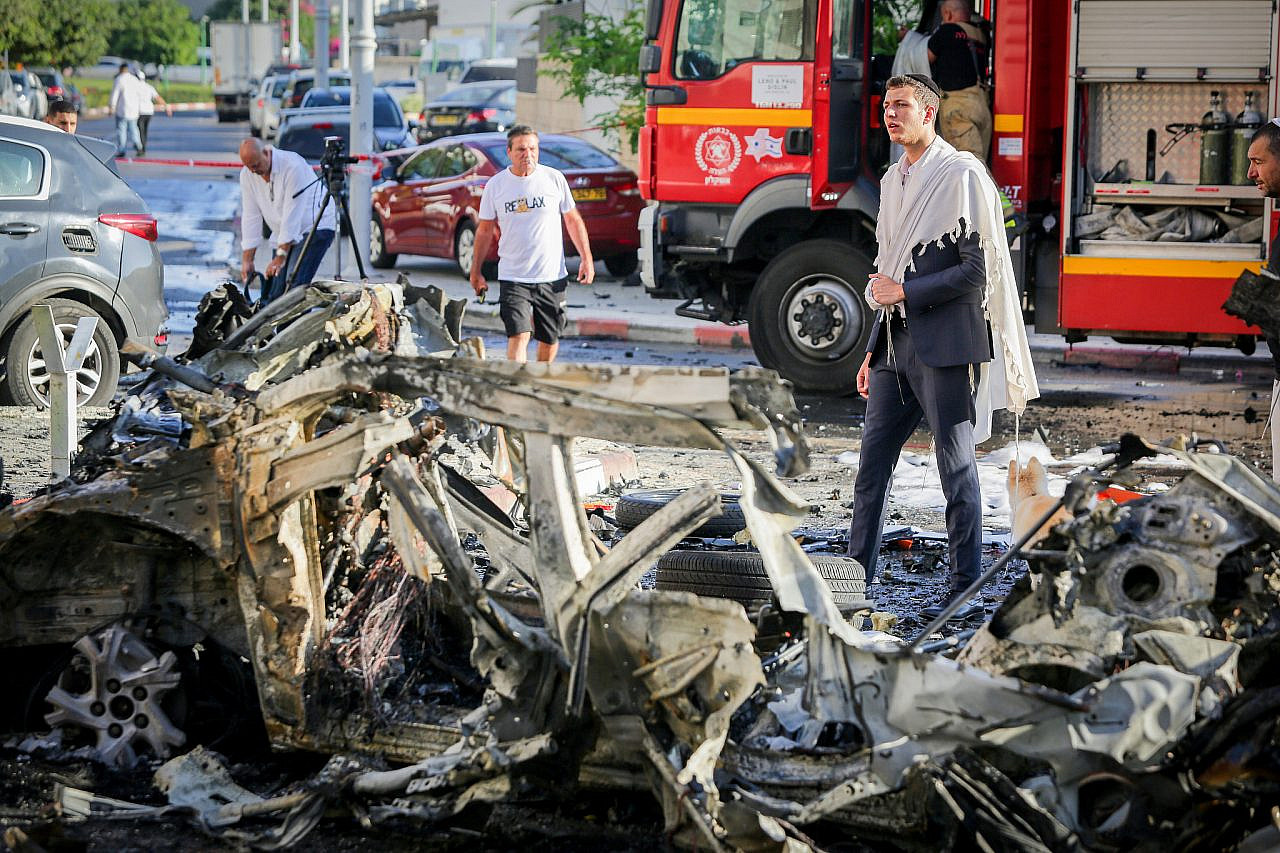
“The reason Ashkelon doesn’t get the same compensation as the kibbutzim and Sderot has to do with its size,” explained a former senior official at Israel’s Finance Ministry, who asked to remain anonymous. “Ashkelon is more than twice as big as the rest of the Gaza envelope put together. Giving its people the same benefits would add NIS 7 billion to the war’s expenses. The Treasury is very much against it.”
An estimated 60,000 people left Ashkelon in the first month of the war. Kovary noted that the constant moving was difficult. “It’s not for everyone.” she said.
Indeed, her fellow teacher, Simona Lahav, left Ashkelon briefly before opting to return with her husband and four children. From their apartment on the ninth floor, Lahav and her family can hear the explosions from rockets falling in Ashkelon and missiles dropping in nearby Gaza.
“At first, we wanted to get away from what felt like a horror movie,” she explained. A week after the war started, she looked into hotel rooms. “Prices online came up to NIS 7,000 [around $1,900] for the weekend.”
Lahav and her family spent 10 days in a hotel in a rural location in the Negev/Naqab but felt ill at ease there. Then, they got a hotel room in the city of Eilat, located at Israel’s southernmost tip. “Eilat is a tourist town; it felt sad during the war,” Lahav said.
When her family went to the city’s mall, a person yelled that terrorists had infiltrated it. “We ran into a restaurant’s kitchen and grabbed knives,” she recounted. Although it was a false alarm, Lahav reports that her youngest son was retraumatized by the experience.
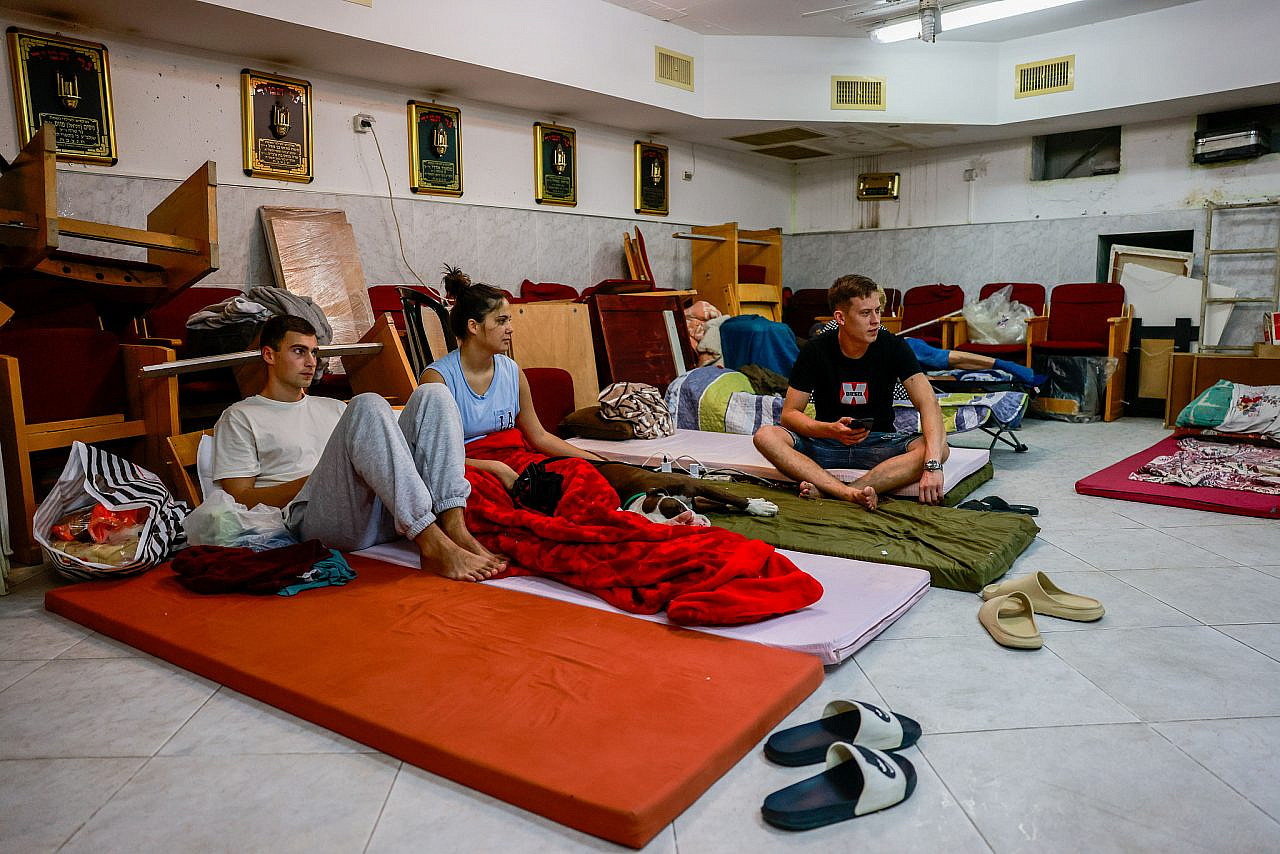
After a week in Eilat, Lahav’s family grew tired of living out of a suitcase, and decided to return to Ashkelon. During their first five days back home, the whole family slept in the safe room together. Now, only the children sleep there. “I feel safer in Ashkelon, knowing that my family is nearby, than I did away,” Lahav said.
Both Lahav and Kovary expressed their frustration with the lack of state funding for Ashkelon’s residents. “We were hit just as badly as some of the kibbutzim that were evacuated, if not worse,” Lahav said.
‘This crisis calls for a new map’
While the government focused on the cost of Ashkelon’s evacuation, Gutman, from the Technion, argues that officials are looking at this crisis the wrong way.
“The government defines this as a war and is looking at the distance from Gaza as its metric for evacuation,” she explained. “But what’s happening inside of Israel is a mass terrorism event: it concerns the civilian population. This crisis calls for a new map.”
Gutman’s Technion lab has developed such a map, highlighting where the most vulnerable populations live on Israel’s borders, prioritizing them for evacuation. In one of her recent articles, she argued that only evacuation maps based on an analysis of poverty, social support, and ability to evacuate can foster people-centered evacuation policies.
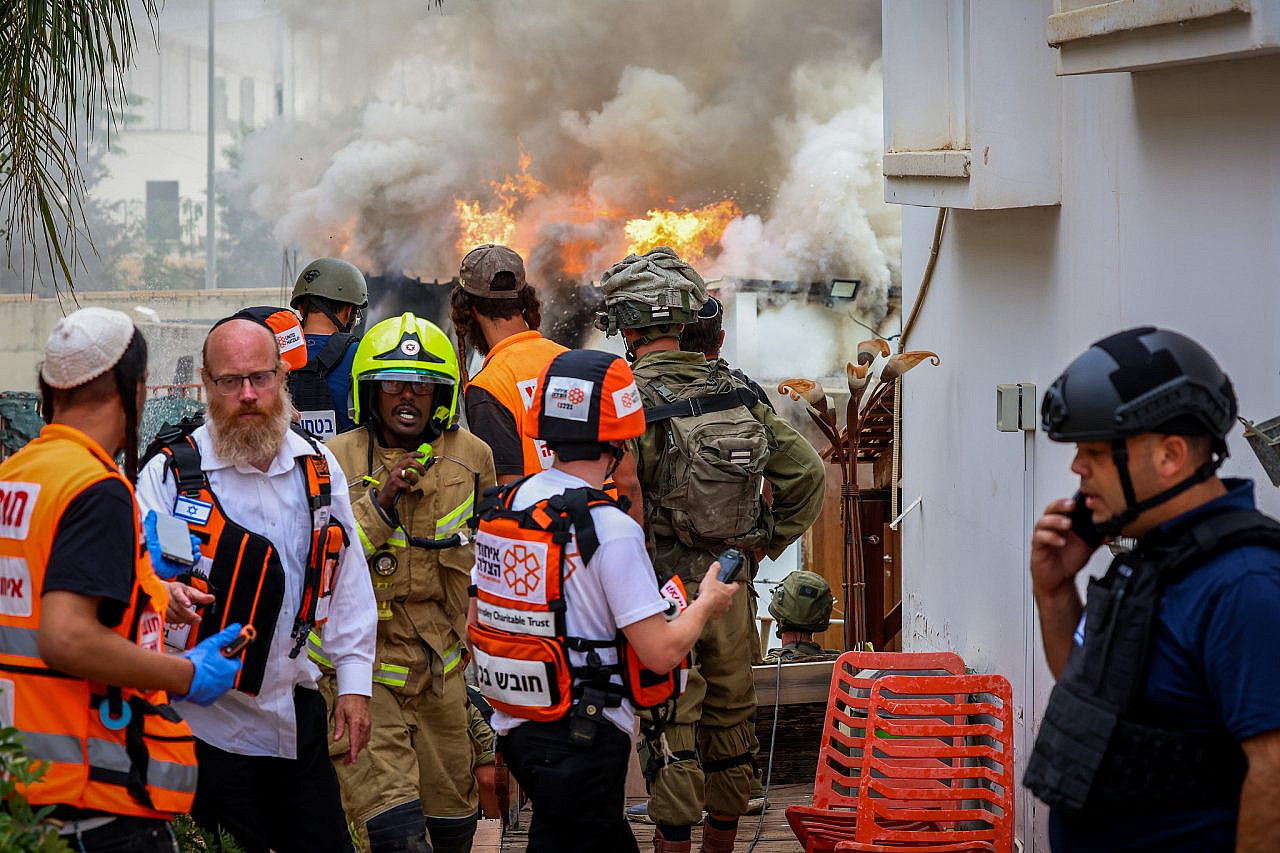
Gutman suggested that the mayors of southern cities are not sufficiently organized to change the government’s evacuation policies. Even though kibbutzim are traditionally left-leaning while the mayors of the cities in the area are traditionally aligned with Netanyahu’s Likud party, the state encourages the cities to compete with one another over resources, Gutman explains. Their inability to maximize their political power allows the government to keep discriminating against the bigger cities’ interests.
For the first eight weeks of the war, Ironi Dalet High School conducted its classes on Zoom. “A lot of my students had their cameras off,” said Nir. “Some told me they couldn’t get out of bed. I don’t know how you can learn anything like this.” The school then started bringing back students in 10th-12th grade for in-person classes for part of the week. For Lahav, who remained in Ashkelon after her brief time away, in-person teaching was welcome.
Most read on +972
After six weeks in Tel Aviv, Kovary also returned to her home in Ashkelon. “There is only one rocket siren a day now, and my husband is supposed to come home from reserve duty soon,” she said. Nir and Shirker, whose communities were evacuated by the state according to official policies, will teach in-person two days a week. It is unclear when they will be able to return to their homes.
Like everyone in the Gaza envelope, these women face an uncertain future. They are continuing to do their jobs, whether remotely while displaced or in-person under Hamas rocket fire, while the government that is supposed to ensure their safety is in no hurry to end the war. The army insists that it will remain in Gaza until it topples Hamas — which, they say, could take another year.
When she visited her home in Kibbutz Yad Mordechai in December, Nir drove by the spot where she saw a dead body on Oct. 8. The entrance to the kibbutz had two checkpoints, and it was surrounded with military and artillery. And while the authorities are preparing the kibbutzim for a prolonged hotel stay, Nir is tired of it. “I’d go back home as soon as they tell me it’s safe,” she said.

